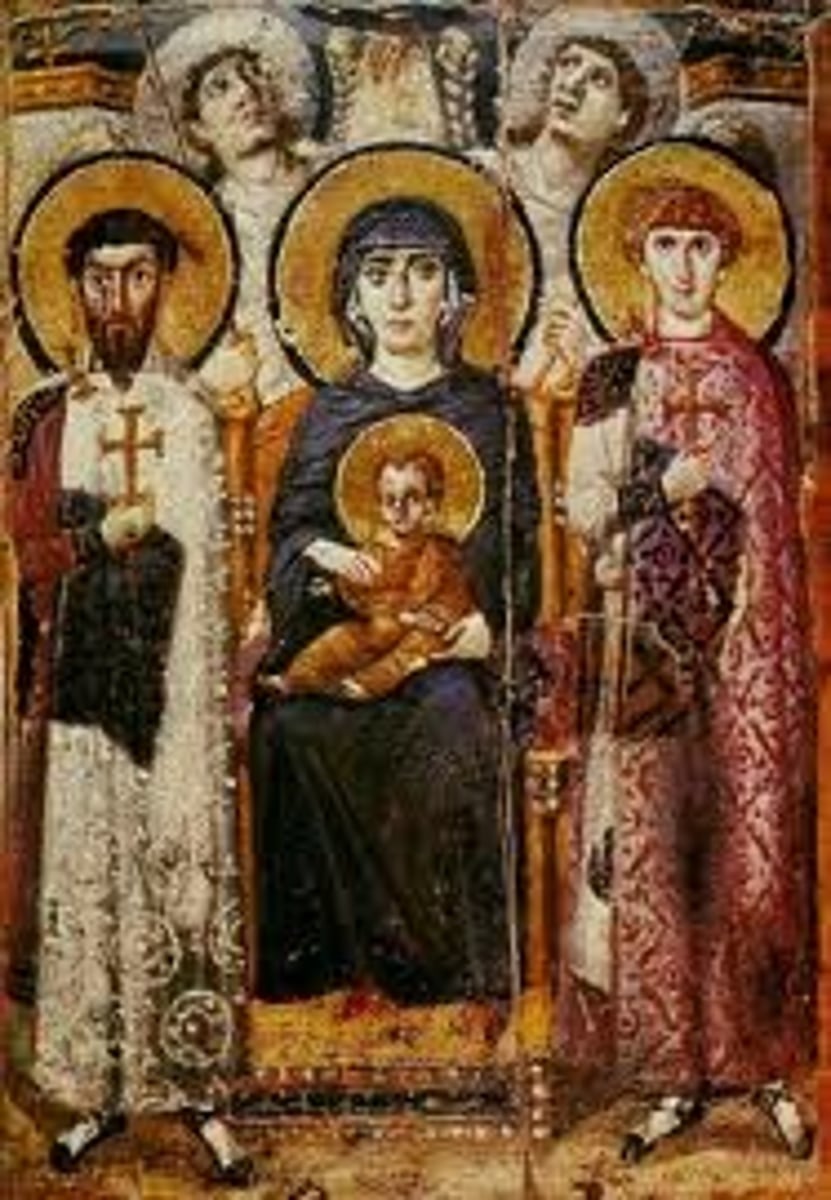Byzantine Art
1/5
There's no tags or description
Looks like no tags are added yet.
Name | Mastery | Learn | Test | Matching | Spaced |
|---|
No study sessions yet.
6 Terms
- "Holy Wisdom"
- combination of centrally planned and axially planned church
- exterior: plain and massive, little decoration
- interior: altar at end of nave, but emphasis placed over area covered by dome; cornice unifies space; arcade decoration: wall and capitals flat and thin by richly ornamented; large fields for mosaic decoration (at one time had four acres of gold mosaics on walls); many windows punctuate wall spaces
- dome supported by pendentives (first time every); 40 windows at base symbolically acting as halo over congregation when filled w/ light
- minarets added in Islamic period, when Hagia Sophia functioned as a mosque; now a museum; marble columns appropriated from Rome, Ephesus, and other Greek sites; capitals avoid classical allusions; surfaces contain deeply cut acanthus leaves
- patrons: Emperor Justinian and Empress Theodora; commissioned work after burning of original building in Nike Revolt of 532
Hagia Sophia
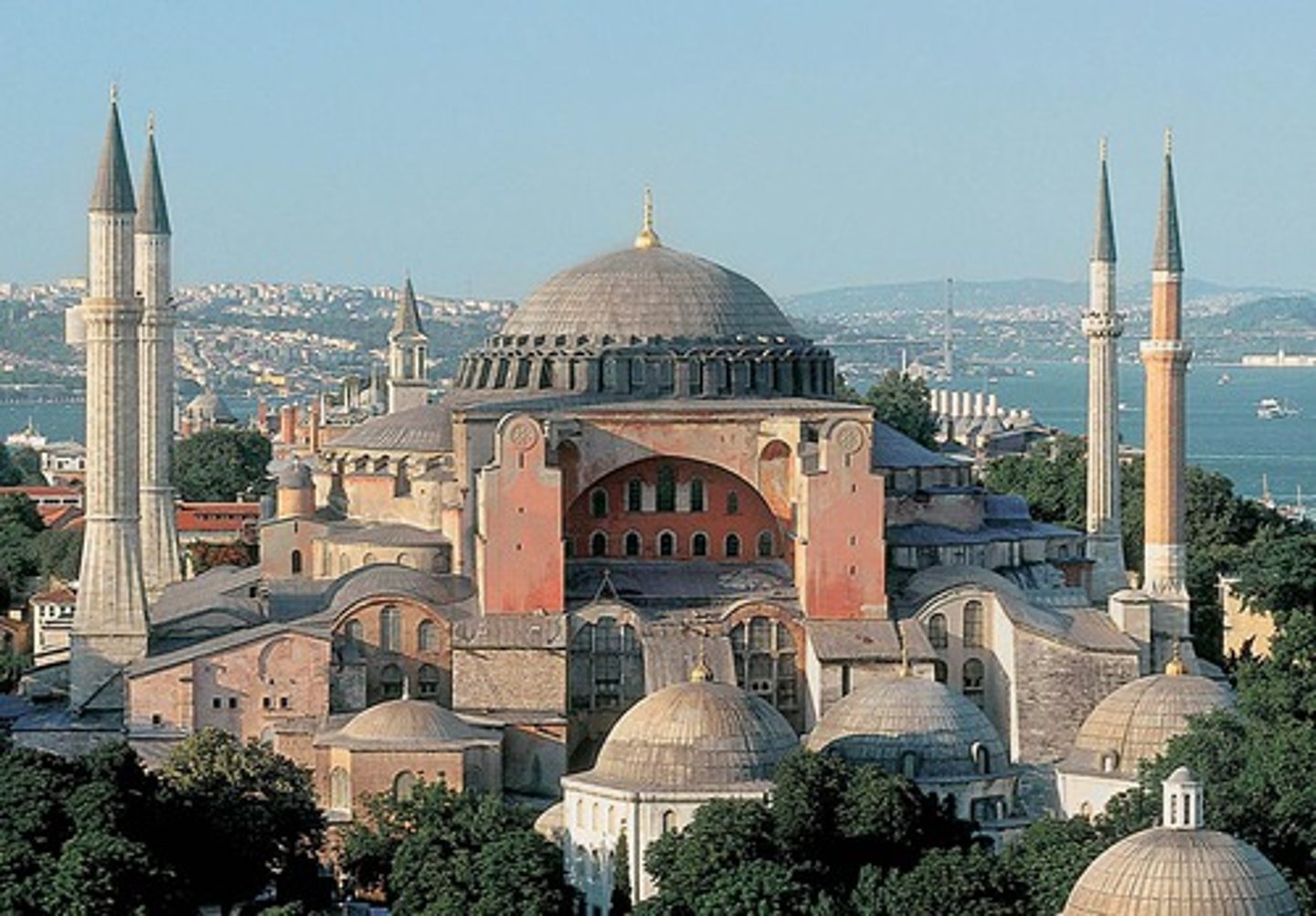
- 8-sided church; two concentric octagons
- plain exterior except porch added later in Renaissance
- large windows for illuminating interior designs
- interior w/ thin columns and open arched spaces; dematerialize mass of structure
- martyrium
- banker Julianus Argentarius financed building of
San Vitale
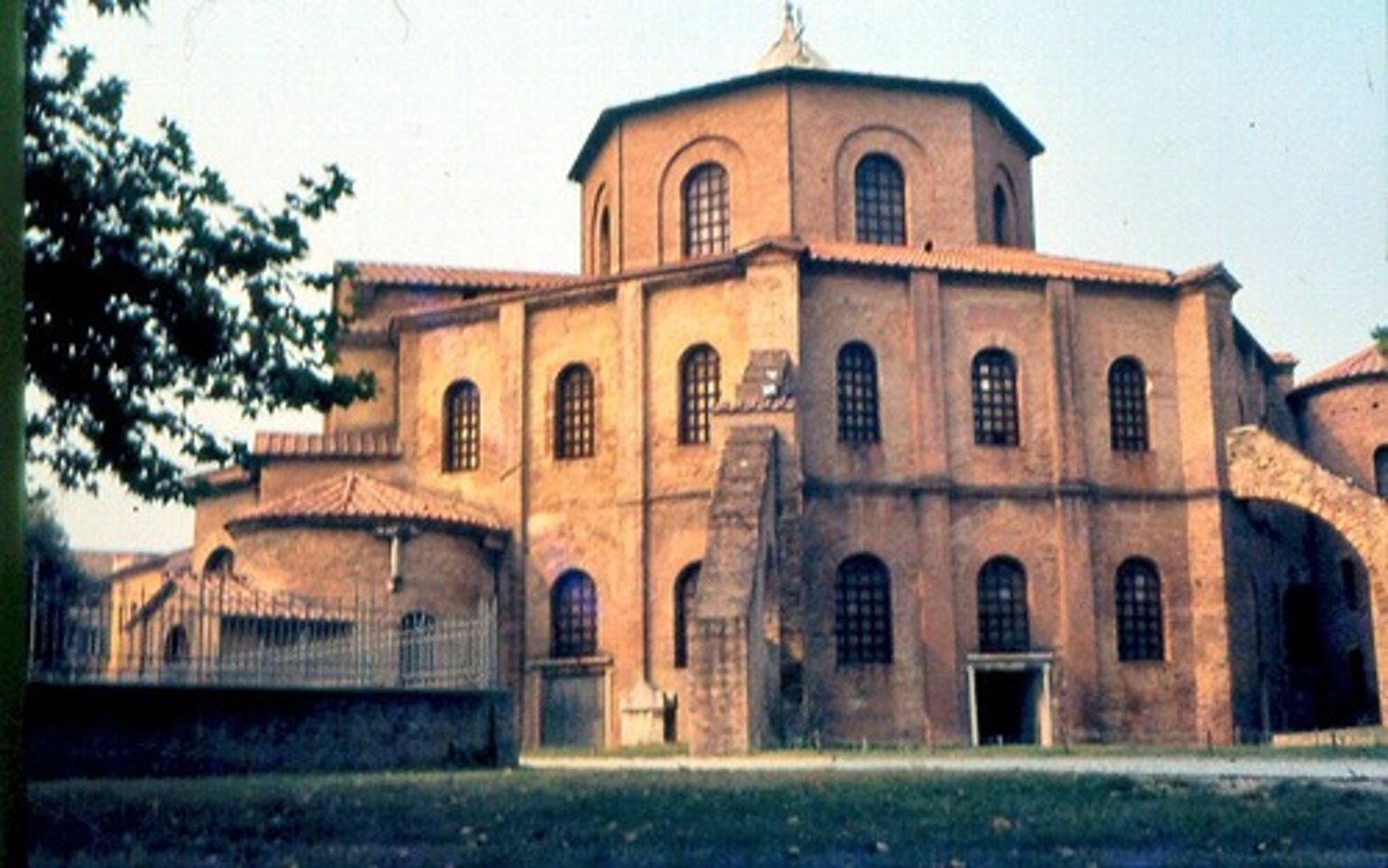
- left: clergy; right: military
- dressed in royal purple and gold
- symmetry, frontality
- holds paten
- slight impression of procession forward
- figures w/o volume; seem to float and overlap at each other's feet
- minimal background: green base at feet, golden background indicates timelessness
- archbishop Maximianus identified, only participant labelled
- halo indicates saintliness, semi-divinity as head of church and state
- Justinian and Theodora actively participating in Mass; position over altar enhances this allusion
Justinian and Attendants
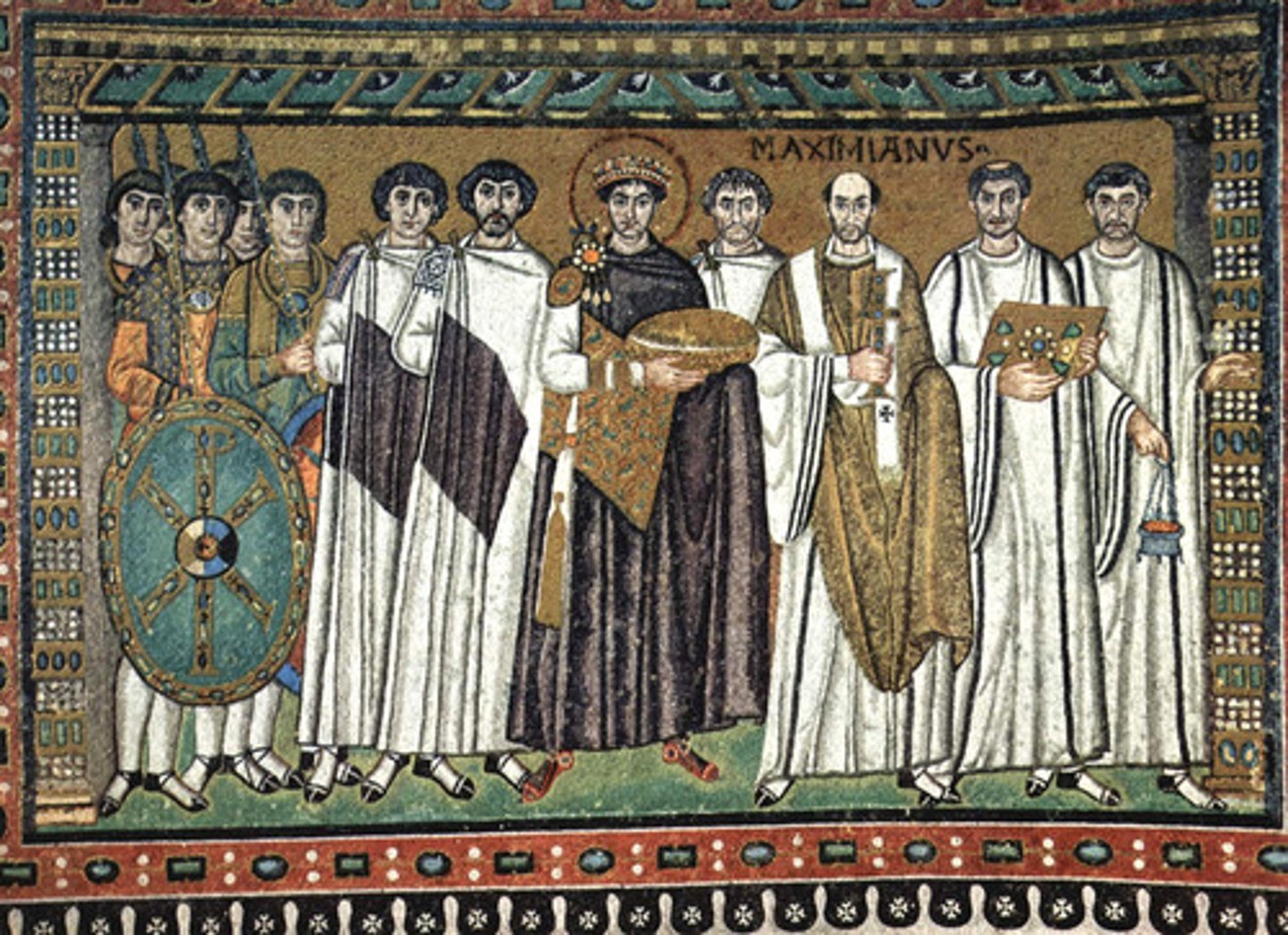
- slight displacement of absolute symmetry w/ Theodora; plays secondary role to husband
- richly robed empress and ladies at court
- stands in architectural framework, holding chalice for mass; about to go behind curtain
- figures flattened and weightless, barely a hint of a body can be detected beneath drapery
- Three Magi depicted on hem of dress, drawing parallels between Theodora and Magi
- figures elongated and generalized; floating feet
Theodora and Attendants
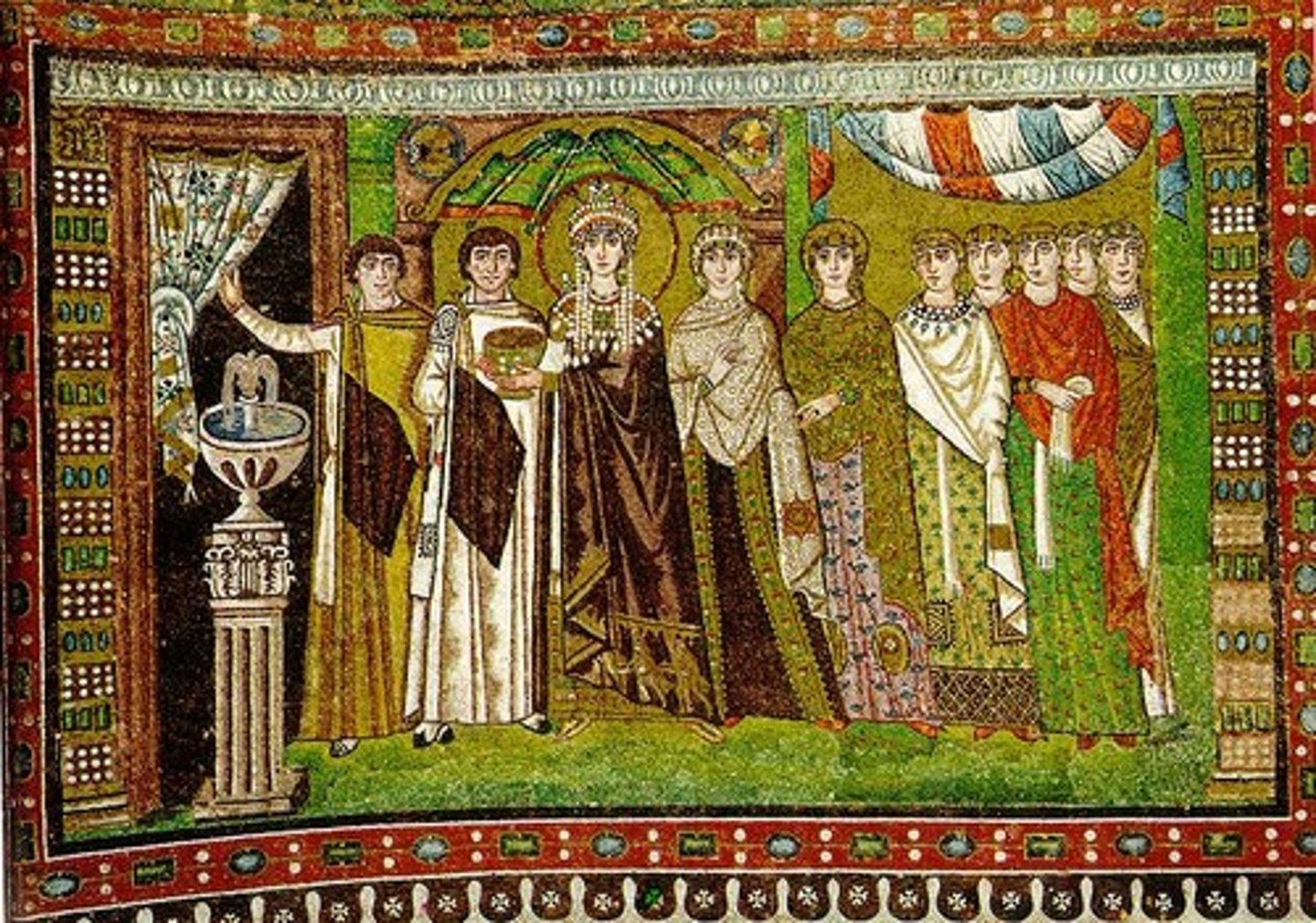
- style: lively, softly modeled figures; classical training of artists: contrapposto, foreshortening, shadowing, perspective; shallow settings; fluid movement of decorated figures; richly colored and shaded; two rows linked by a bridge/pathway; text placed above illustrations
- technique and origin: silver script now oxidized and turned black; origin uncertain: Constantinople? antioch? maybe done in royal workshop: purple parchment hallmark of royal institution; genesis stories are done in continuous narrative w/ genre details; written in Greek; partial manuscript but illustrations survive; first surviving illustrations of stories from Genesis
- Rebecca and Eliezer at the Well: Genesis 24: 15-16; Rebecca emerges from city of Nahor w/ jar on shoulder for spring water; quenches thirst of camel driver and camels; colonnaded road leads to spring; Roman water goddess personifies spring
- Jacob Wrestling the Angel: Genesis 32: 22-31; Jacob takes two wives, two maids, and eleven children (number of children abbreviated) and crosses a river; Roman-looking bridge; at night wrestles angel, who strikes him on hip socket
Rebecca and Eliezer at the Well and Jacob Wrestling the Angel, from the Vienna Genesis
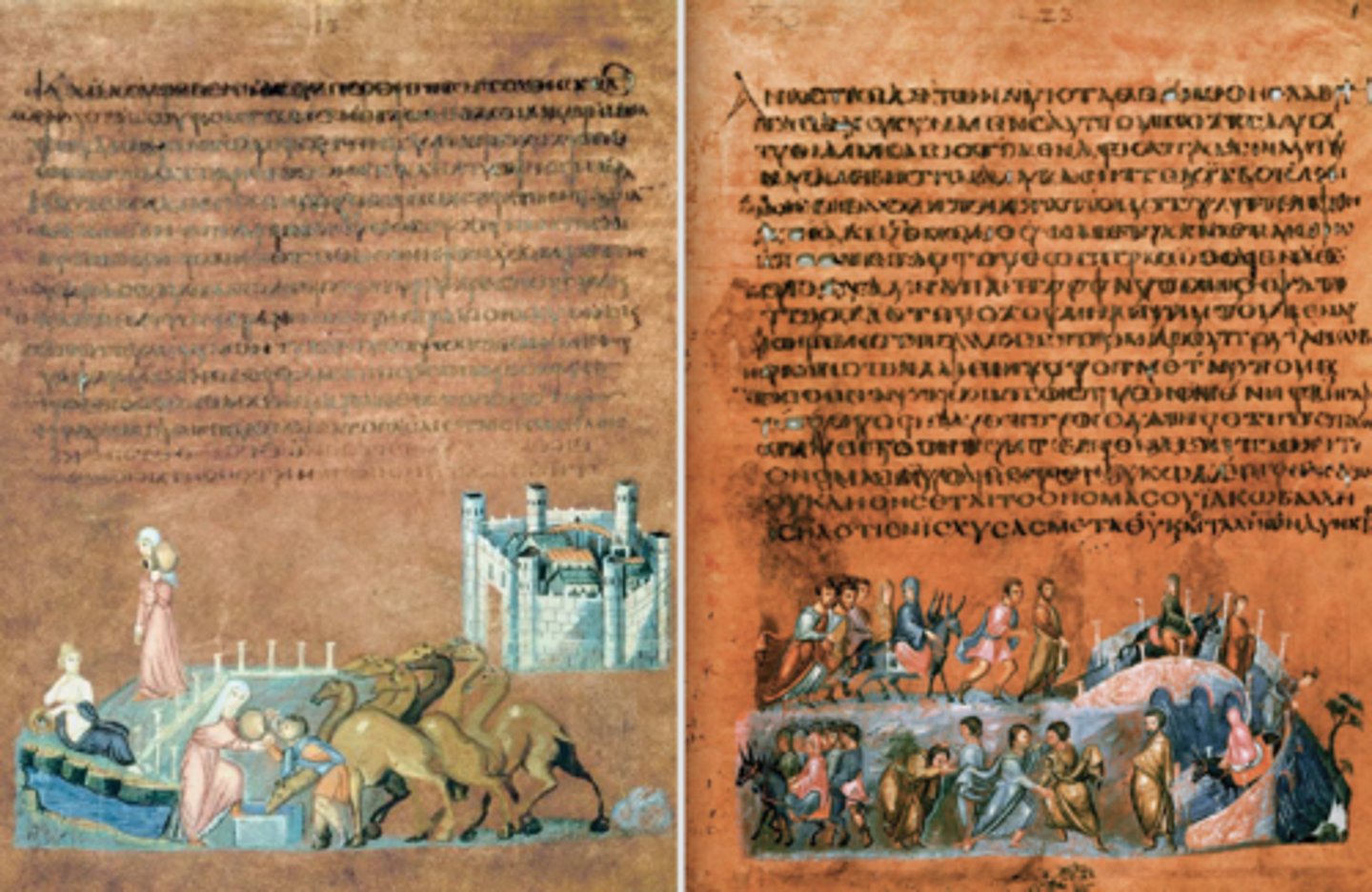
- icon placed in medieval monastery
- Virgin and Child centrally placed; firmly modeled
- Mary as Theotokos; looks beyond viewer as if seeing into futures
- Christ Child looks away, perhaps anticipating crucifixion
- Saints Theodore and George; warrior saints; stiff and hieratic; engage viewer directly
- angles look toward heaven, where descending hand of God comes down to bless scene; painted in classical style w/ brisk brushwork
Virgin (Theotokos) and Child between Saints Theodore and George
